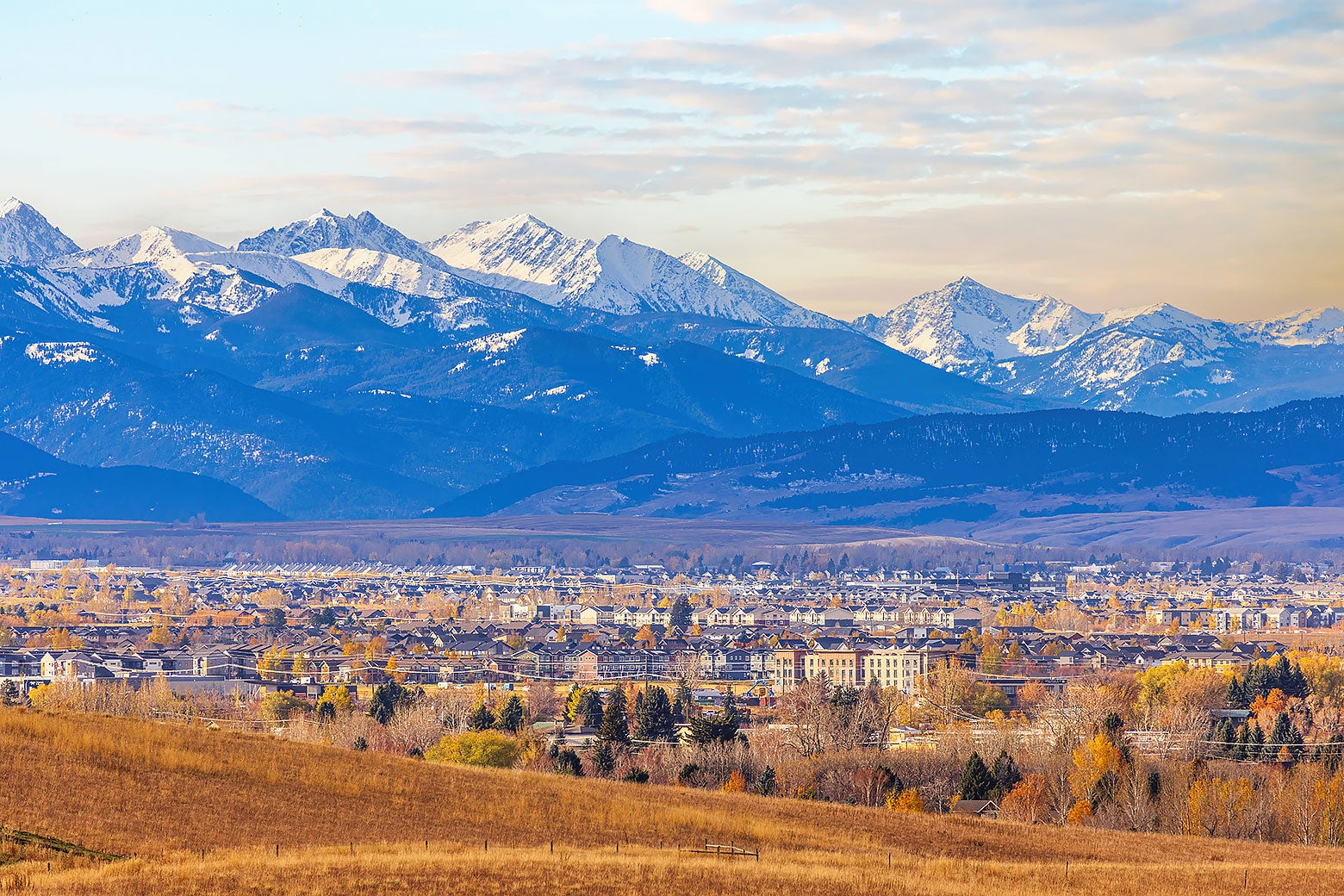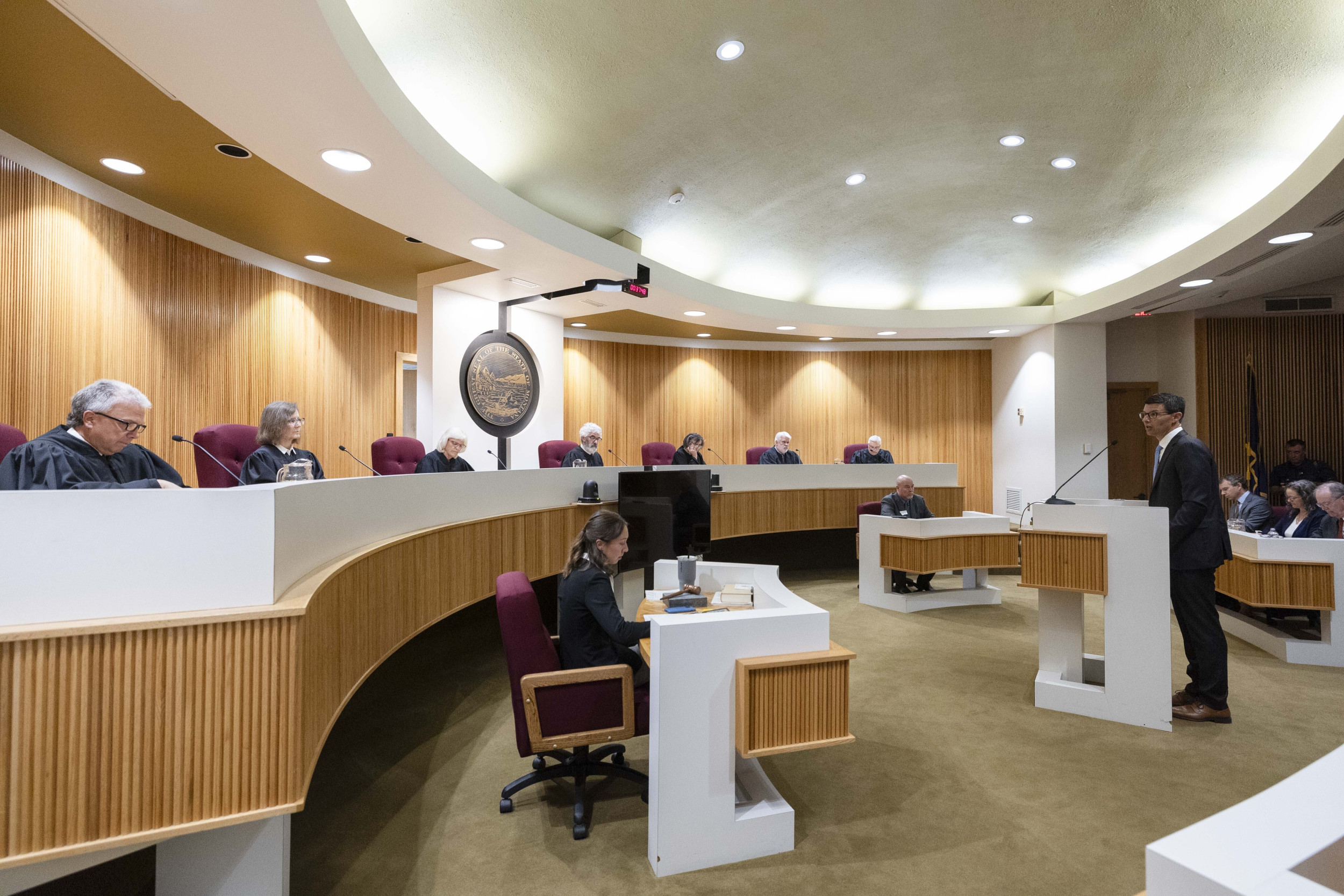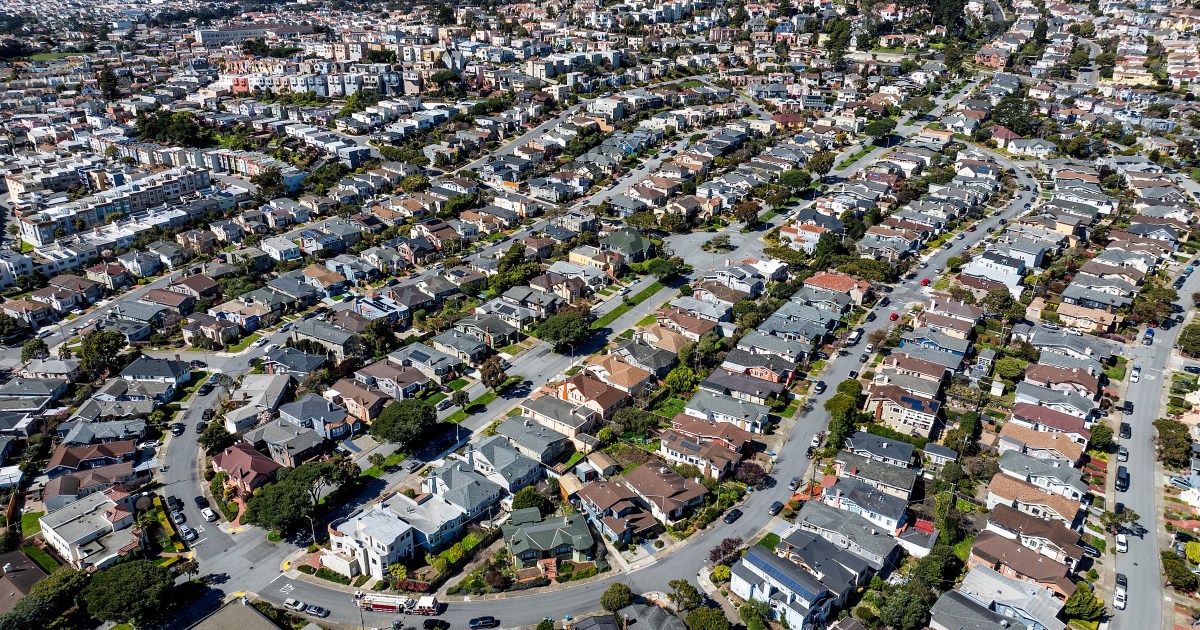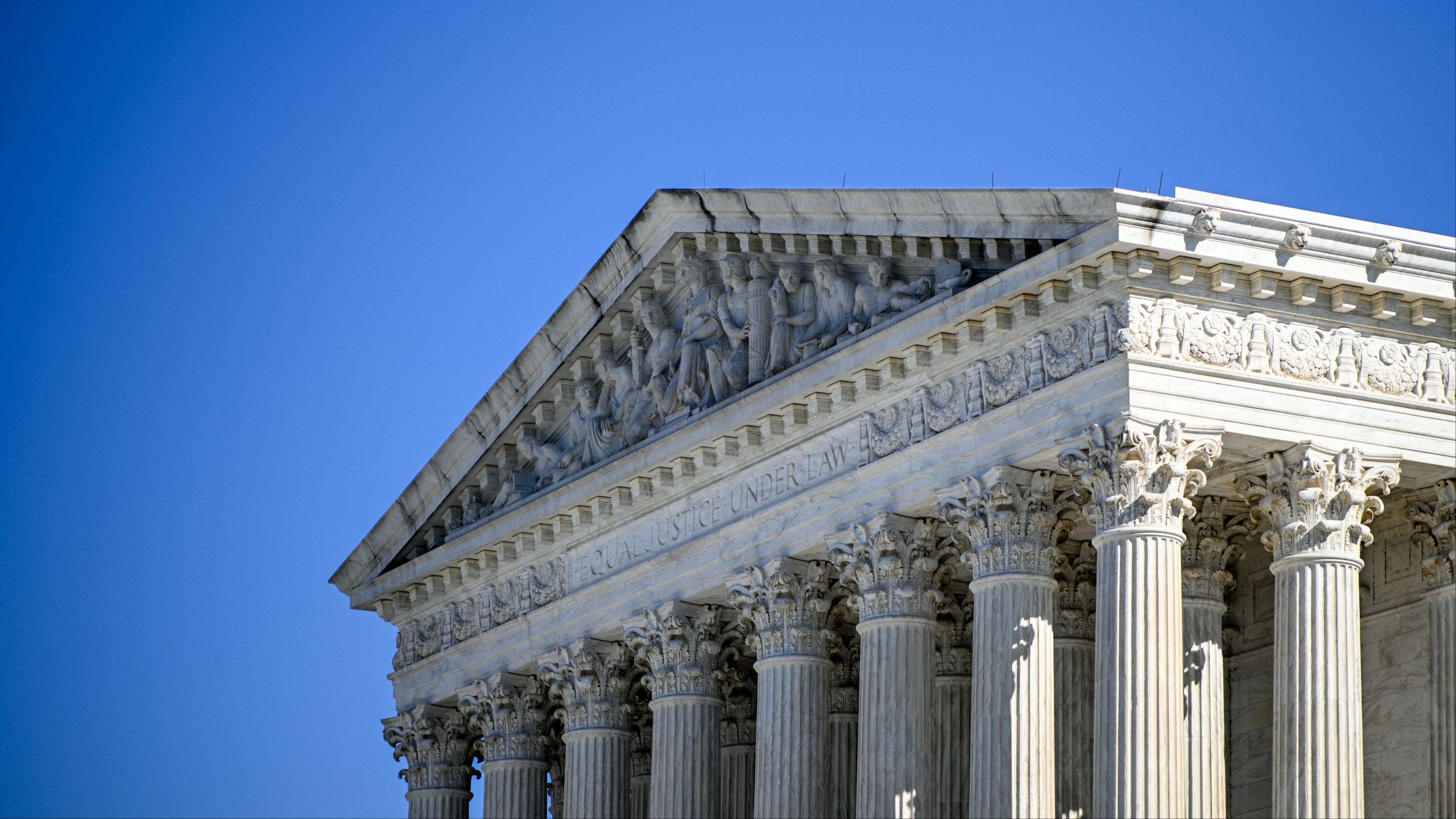New Mexico
The future of New Mexico’s beloved bosque – High Country News

Old rope swings hang from even older cottonwoods along the Middle Rio Grande in Albuquerque, New Mexico. The riverside forest, known as the bosque, has long been a shady oasis in the arid valley. “It’s where everyone would go,” said Shelby Bazan, who describes herself as a “born and raised Burqueña,” or native of Albuquerque. Her father grew up along the river in the ’70s, and both her parents remember summers when the river was alive with water and people.
Myron Armijo, the governor of Santa Ana Pueblo, shares those memories. “The Rio Grande was our playground,” he said. “Once we got our chores done, then we would get out there and play, a lot of the time pretty much all day long.” Now, water diversions, development and climate change leave more sections of the river dry each year. “If you jump, you’re just going to hit the dirt,” said Bazan. Nobody has bothered to replace the old swings.
Over the past two decades, restoration efforts large and small have removed introduced plants such as tamarisk and Russian olive, which can form impenetrable thickets, replacing them with native cottonwoods, willows and shrubs that support wildlife and are significant to the people with the deepest roots in the valley. “It means a lot to us, both traditionally, culturally,” Armijo said of the bosque.
But as the region warms — average temperatures since 2000 have been 1.8 to 2 degrees Fahrenheit higher than they were over the previous century — and the once-high water table drops, those who love the bosque have been forced to reconsider what can be realistically restored.
“The Rio Grande was our playground. Once we got our chores done, then we would get out there and play, a lot of the time pretty much all day long.”
OVER MILLENNIA, the bosque’s mosaic of plant communities was maintained by a high water table, seasonal flooding and a meandering river channel. “You’d have grassy meadows, wetlands and understory shrubs over here; young cottonwoods over there; older cottonwoods over here,” said ecologist Kim Eichhorst, director of the community-science-based Bosque Ecosystem Monitoring Program (BEMP).
By the 1990s, 150 years of water- and land-use decisions had destroyed or degraded much of this historic mosaic. “Channelization, levees to protect communities, impoundments to store water for irrigation purposes — that all changed the river,” said Glenn Harper, who’s worked for Santa Ana Pueblo for over 25 years and oversees its 142,000 acres of grassland, shrubland and woodland habitat.
Cottonwoods that germinated in the 1930s and 1940s are now separated from the river and nearing the end of their lifespan. Without the seasonal floods that distributed seeds and nutrient-rich sediment, there are few young cottonwoods to replace them. At the same time, drier, hotter conditions have encouraged introduced plants, not only tamarisk and Russian olive but Siberian elm, Ravenna grass and many others.
In response, many Middle Rio Grande communities — at Santa Ana and Sandia pueblos, in Albuquerque and elsewhere — began restoration efforts along the river to bring back the bosque. Though much of the initial work was spearheaded and funded by local communities, many of the projects now have government agency support. For example, Albuquerque’s industrialized South Valley is now home to Valle del Oro National Wildlife Refuge, thanks to a collaboration between the local community and the U.S. Fish and Wildlife Service. Though bosque restoration isn’t the refuge’s sole purpose, it is a part of its plans for the land.
When Santa Ana Pueblo embarked on its ambitious bosque restoration plan, said Armijo, the tamarisk and Russian olive thickets under the mature cottonwoods were so dense that getting through them on horseback was impossible. After the pueblo’s Bosque Restoration Division cleared about 1,500 acres, the bosque began to resemble the open cottonwood forest that pueblo elders remembered from their youth.
Since then, though, falling groundwater levels have stressed the aging cottonwoods, and many are dying or dead. “Climate change,” said Nathan Schroeder, Santa Ana Pueblo’s Restoration Division manager. “That’s where I feel like the deck keeps getting shuffled.” And because the roots of young trees can no longer reach the water table, the pueblo’s original plan for planting new cottonwoods among the old is no longer tenable.
AS CONVENTIONAL restoration approaches become less reliable, advocates are asking how to move forward. “What we really need is to recognize what the system can support,” said Eichhorst. Instead of trying to restore the bosque to what it was, she envisions a mix of dryland plants and smaller pockets of “wet-loving” plants, cottonwoods or otherwise, wherever water is sufficient.
At the pueblo, the Restoration Division may plant some native drought-tolerant shrubs where it had planned to grow cottonwoods. Farther downstream in Albuquerque, said geographer and herbalist Dara Saville, some of these species are showing up on their own: “Now that the bosque is largely dry … you see the creeping in of plants from the mesa, from the foothills, from these higher, drier areas.”
Saville, the founder of the nonprofit Yerba Mansa Project (YMP), doesn’t mind shrubs. “They’re key components of my concept of restoration, resiliency and ongoingness.” The bosque will continue, she said, but as it changes to adapt to new conditions, tenacious, shrubby plant species will likely become more common. And while shrubs can’t provide a shady refuge for people, they do offer food and shelter to wildlife, and some are sources of traditional foods and medicines. Along the Middle Rio Grande, project staff and volunteers have planted native species, such as yerba mansa, pale wolfberry, golden currant and willow baccharis, all of which have medicinal uses.
Bazan, who works as a BEMP educator, said nonnative trees are another option: “If we don’t have the cottonwoods, would you rather have an exotic bosque that has Siberian elm that still provides shade — or would you rather have a native bosque, but of shrubs and dry grassland areas?” Though Siberian elms are classified as “noxious weeds” in New Mexico, their tolerance for a lower water table and their ability to provide habitat for local species such as porcupine have led restorationists to consider leaving them in place in some areas.
“Now that the bosque is largely dry … you see the creeping in of plants from the mesa, from the foothills, from these higher, drier areas.”
While the restoration projects are ecologically and culturally important, there are many competing uses for the Rio Grande’s water, including irrigation and the demands of an expanding urban population. Although riverside vegetation also uses river water, a new bosque mosaic is expected to use less water than extensive thickets of nonnative trees and shrubs.
In the pueblo, however, the focus remains on native plants and wildlife. To support young cottonwoods and willows, the restoration division, in partnership with federal agencies, used excavators to lower sections of the riverbank and bring back some limited flooding. The bosque planted in this new floodplain over the past 15-plus years is luring endangered southwestern willow flycatchers, threatened western yellow-billed cuckoos and, according to this year’s survey, yellow warblers, Harper said.
No matter its makeup, restoring and maintaining a more resilient bosque ecosystem will require cooperation and long-term maintenance. “It never ends,” said Harper. Eichhorst is encouraged by the region’s shared love of the bosque. “It isn’t something that’s just an older generation, but it’s something that younger students are actively participating in,” she said. “It’s not hopeless.”
We welcome reader letters. Email High Country News at editor@hcn.org or submit a letter to the editor. See our letters to the editor policy.
This article appeared in the November 2024 print edition of the magazine with the headline “A riverside oasis heats up.”

New Mexico
New Mexico OL Transfer LaJuan Owens Commits to Cal

It was predictable that Cal would go after offensive linemen in the transfer portal, the Bears picked up one on Friday when New Mexico transfer offensive tackle LaJuan Owens announced on social media that he has committed to Cal.
Owens played for Cal’s new offensive line coach Famika Anae at New Mexico so the Bears know what they are getting.
Owens spent his first college season at Tulane, but he redshirted that season before transferring to New Mexico, where he played just one season. Therefore, the 6-foot-5, 335-pounder has three seasons of college eligibility remaining.
New Mexico’s offensve line was outstanding this season, giving up just five sacks, the fewest in the country.
Let’s Work Cal🐻 @CalFootball pic.twitter.com/gRoJPkbZHC
— LaJuan Owens (@lajuan_owens) December 21, 2024
.
New Mexico
CDT: be gentle with me, New Mexico – The Trek

Day 94 – New Mexico’s whisper
In New Mexico, the wind is a gentle whisper, a soothing caress compared to Colorado’s raw, biting force. The final state of my CDT thru hike. I must admit that I am not sad about the end coming closer.
The aspens shine golden, soft, warm light flows between the trees and across meadows. The Continental Divide stretches out like an invitation, its terrain kinder and more forgiving.
“Oh, Colorado was rough on you?” New Mexico seems to say with a wry smile, shaking her head in mock disapproval. “She’s always like that – loves to toy with you hikers. Come on, take my hand. Let’s go home.”
The Continental Divide Trail unfurls through endless expanses of golden grass, weaving into pockets of forest that feel… cozy. It’s hard to describe but anyone who has hiked this trail southbound will know what I mean.
Campsites are everywhere – sheltered, flat, on soft duff, complete with logs perfectly placed to sit on. After weeks of squeezing my tent into awkward gaps between the only five trees around, cowboy camping behind scrubby bushes for a sliver of wind protection, and lying on rocky, uneven ground, New Mexico was a treat.
Cows are my trail companions again, their black, brown, and shaggy fur dotting the landscape. They’re not alone. Around every bend and behind every bush, hunters – men clad in camouflage, rifles or crossbows slung over their shoulders.
3 hunters vs 1 dirty thru hiker
On my second day in New Mexico, I was walking down the trail when I noticed three men ahead of me. They were tall, in full hunting gear, weapons in hand as they moved steadily through the woods. I stopped in my tracks. For a moment, I just watched them like characters in a story I didn’t yet know.
Back in the summer, I would have been nervous – three armed men in the wilderness while I hiked alone was a scenario that once unsettled me. But months on the trail had changed that. I’d met hunters, chatted with them, learned about their craft, and started to understand the pull of the hunt. Now, I felt no fear, just curiosity.
I stepped forward, closing the distance between us. But before I could call out a friendly hello, I noticed their demeanor shift. Their movements became tense, deliberate. Their heads swiveled as they scanned the trees around them.
“Dang,” I thought, “they must have spotted an animal. Better be quiet and not ruin it.” I crept forward, suddenly excited at the idea of maybe witnessing a shot in action.
Then one of them turned and saw me. His posture softened immediately, and he barked a nervous laugh. “You scared the crap out of us,” the younger man said, lowering his weapon.
“Me? Oh, I’m sorry,” I replied, flashing my most innocent smile before striding past them with purpose, doing my best to hold back a grin.
As I continued down the trail, I couldn’t help but think, I don’t know what’s more surprising: that they couldn’t tell the sound of human steps from an animal, or that three fully armed men got spooked by me – just a thru hiker, unarmed and unassuming.
The thought made me laugh quietly to myself as the forest swallowed me up again.


Day 95 – all humans gone
Cows. Lots of cows but I did not see a single person all day. I think that’s the first time since Idaho that this has happened on the CDT. Good water sources become more sparse and I camel up a few times to avoid the delicious, green-brown, cow pond smoothies.


Day 96 – a detour to Santa Fe
I’m on the phone to the hostel in Santa Fe, when an older lady walks towards me. Her face looks like she’s about to tell me off for something and she starts talking to me although I’m obviously making a phone call. I drop the phone slightly annoyed. Ghost Ranch has been a little disappointing but I am not sure what I was expecting, maybe more than just buildings? The lady approaches me.
“Are you a CDT hiker? Do you need a ride somewhere?”
She caught me by surprise. She’s a trail angel.
“Yeah… to Santa Fe?”
“Sure, get in”, she offers a smile.
Ms. J is from Silver City, a small town nestled in southern New Mexico, and became acquainted with thru-hikers last year. Driving around her town when she noticed people with massive backpacks, sunburned faces, and dirt-streaked calves. Curious, she started talking to them and before long, she found herself shuttling them to trailheads and post offices.
Now, her car, a sturdy thing, had been transformed into a makeshift camper. Filled with camping gear, blankets and other supplies.
I sit cross-legged on the floor of the backseat, wedged next to a box of canned goods and snacks. The ride is a little cramped, but something about the coziness made it feel right. As the car rolled down the highway, our initial small talk gave way to deeper topics – migration, politics, mental health.

Whole Foods and head lamps
The Santa Fe International Hostel is one of those places that feels like it’s been part of the landscape for ages. The building is old, full of rustic charm. The real draw, though, is the full kitchen. And when I say “full,” I mean it’s a feast. On weekends, the hostel is practically overflowing with donations from Whole Foods: fresh fruit, veggies, loaves of bread, pastries, cakes, cheeses, eggs, yogurt, and even coconut cold brew. It’s where your hiker hunger goes to die.
Plus the people are incredibly kind. Probably my favourite hostel “on” the CDT.
Besides the hostel, the only place I wanna point out in Santa Fe is the outdoor shop called “tourist”. The owner stocks several cottage brands, all kinds of essentials plus a massive used gear section. I bought a new headlamp and it was the same price as online.
I roll over in my bunk, the morning light spilling through the windows. The kitchen doesn’t open until 8, and without the promise of coffee, there’s no real reason to get up just yet.
An hour later, I’m sitting in the hostel’s quiet patio, cradling a steaming mug of black coffee – the kind that feels like liquid gold. I hadn’t planned to take a zero, but here I am.
“Can I join?” A woman with dark hair appears, followed closely by another with blonde curls. They settle at the table, and before long, we’re talking like old friends.
“We’re attending the Human Design conference,” Nicole explains, her voice warm and casual. Minutes later she’s excitedly reading my chart.
The day slips by in a haze of relaxed conversations, the comforting weight of doing nothing. My zero in Santa Fe turns into a slow, easy day spent lounging at the hostel, eating slices of rich cheesecake, and, eventually, booking a concert ticket for after the trail. It feels good to have something to look forward to – although it is a deadline, but this one brings excitement instead of pressure. Now, there’s a mark on the calendar, reminding me that the end is near. The CDT is almost over.
Day 98 – new weird named friend unlocked: Pringles
I follow the irresistible scent of fresh coffee into the hostel kitchen. I’m not the only one up early.
“I hiked the PCT in 2022,” Pringles says casually while cracking eggs into a pan, like it’s the most normal thing in the world.
My eyes widen. “No way.”
We slip into an easy conversation about the challenges of long-distance hiking, the highs and lows of the Pacific Crest Trail. His home state North Carolina. The connection is instant – there’s a shared understanding between us, a bond that only thru hikers seem to have.
The hostel had been a cozy home, but it is time to get going and soon, I’m on a bus, leaving Santa Fe behind.
Christmas route in October
I don’t make it far into the desert when I see another thru hiker in the distance – Inspector! I smile and wait for him to catch up. I’ve met him back in July in Leadore, Idaho, then ran into him again in Encampment, Wyoming, a few times in Colorado and now we’re on schedule to finish the CDT.
“Woah did you get into that storm in the San Juans?”, we exchange stories and plans for the New Mexico section, before I take a side trail to reconnect from the green to the red line (the official CDT), climbing up to the mesa for sunset views. This is called the Christmas route, you will find it in the FarOut App comments.


Day 99 – on the old CDT
“Hi Pinecone :)” is written in the sand in the middle of the burn area. I tilt my head, I’m not sure who this is from.
Lumberjack and I agreed to meet in Cuba and I am a bit behind.
The days in the desert feel like they’re slipping through my fingers. The light fades faster now. Late afternoon, the sun sinks lower, casting long, golden shadows across the land. But then, the light is gone, swallowed by the horizon. And least it’s not freezing cold as it was in Colorado.
That night, I find myself on the old CDT, the forest closing in around me as the last light disappears. The trail – if you can even call it that – is faint and overgrown, just a suggestion of a path weaving between the trees. My headlamp slices through the dark in a narrow beam, illuminating a few steps ahead, but it’s not enough. Bushwhacking in the dark in the dark maybe wasn’t the smartest of ideas. The comments said this route is still maintained?
My GPS is no help. I decide to trust the comments left by other hikers and bushwhack back to where the trail started to be overgrown, scanning the area carefully this time.
“I think there’s a trail there”
My GPS still tells me I’m off but the trail becomes more visible now and heads the right direction. I cowboy camp in the thick underbrush. Another great thing about fall in New Mexico: surprise storms are pretty unlikely.


Day 100 – Cuba, not the country
It’s almost hot as I walk into Cuba, New Mexico, the heat feeling like a luxurious treat. Eyes follow me from shaded porches and windshields, the way small-town gazes tend to linger a little longer. A whistle sends shivers down my spine, I keep my head down and march on.
Ahead, the dusty parking lot of a supermarket, the kind of place that sold everything from groceries to hunting gear. Outside, a tall, lean figure was crouched near the entrance, methodically organizing packets of food.
“Hobos everywhere”, I exclaim in German, laughing. Lumberjack turns around with a smile, knowing before seeing me that it’s me. We hug like old friends, it truly feels like we have known each other forever after running into each other on the CDT again and again.
I excuse myself into the store, feeling ravenous. Equipped with ice cream, pasta salad and a can of diet Dr. Pepper, I return to continue the conversation. Followed by a trip to the post office and a fried chicken lunch. Hiker hunger.


made up your mind
A somber realisation sets in: I gotta catch the post office before midday in Grants in three days. 104 miles in less than 3 days.
Lumberjack looks at this watch, “you basically have to hike now”
I dismiss him with a wave, “I’ll just night hike”
This might be the last time I see Lumberjack on the CDT and besides the 18 year age gap, we’re on the same page about life. He has this calm, safe aura where I feel like I can be myself and speak openly. Plus, we both plan on fundamentally changing our lives post thru hike. Hence, I am not in a rush to leave. The CDT is also just a trail.
Empty plates and crumbled up napkins between us, I slowly unfurl the little plan I have hatched in the last days. My explanation ending with ‘maybe, I don’t know’ and a shy smile. He looks at me with his bright blue eyes for a moment, his tan skin etched with fine lines, a map of years spent under open skies. Years well spent.
„Sounds like you made up your mind“, he nods approvingly and there’s a little crack in my chest, an old one, that fills up with light in that very moment.

New Mexico
Transfer running back Mike Washington signs with Arkansas

Junior New Mexico State transfer running back Mike Washington has signed with Arkansas, he announced Saturday morning.
A 6-foot-2, 215-pound native of New York, Washington rushed for 725 yards and eight touchdowns on 157 carries (4.6 YPC) in 2024. He also caught nine passes for 74 yards with a score.
His best performance of the season came against Western Kentucky on Nov. 9, when he ran the ball 19 times for a season-high 152 yards with two touchdowns.
Before joining the Aggies, Washington spent three seasons at Buffalo, where he accumulated 1,119 rushing yards and 10 touchdowns on the ground.
Washington committed to Utah through the transfer portal Dec. 15, but a visit to Arkansas seemingly made him rethink his decision.
2023 (Sophomore – Buffalo) Had 4 starts in 11 game appearances… ranked 2nd on the team for rushing (362 yards on 90 carries)… scored 2 rushing touchdowns… 13 receptions for 35 yards… had 12 carries for 52 yards vs. Wisconsin… rushed for 57 yards and 2 touchdowns, adding two receptions vs. Fordham… had a season-best of four receptions vs. Liberty… rushed a season-high 88 yards vs. Louisiana… rushed for 39 yards vs. Bowling Green… rushed for 35 yards and added a reception vs. Eastern Michigan.
2022 (Redshirt Freshman – Buffalo) Had 2 starts in 13 game appearances… led the Bulls in rushing with 625 yards and a team-high seven rushing touchdowns… 23 receptions for 135 yards and a score… rushed for 55 yards and a touchdown vs. Holy Cross… rushed for 71 yards and 2 touchdowns vs. Eastern Michigan… Rushed for 36 yards and a score vs. Miami… A season best of 155 yards rushed and two touchdowns, including a 92-yarder vs. Bowling Green (2nd longest run in program history)… receiving touchdown vs. Ohio… rushed 41 yards and a touchdown vs. Central Michigan… had a season-high of eight receptions vs. Akron.
2021 (Freshman – Buffalo) Appeared in 3 games… rushed for 132 yards and a touchdown on 23 carries… 13 carries for 65 yards vs. Wagner… 9 carries for 53 yards vs. Akron… 14-yard touchdown run vs. Bowling Green.
High School Junior season he earned All-State honors after rushing for 1,423 yards and 15 touchdowns… Played defense and had 31 tackles with three interceptions… named All-CNY and MVP of the Regional Championship Game.
-

 Politics1 week ago
Politics1 week agoCanadian premier threatens to cut off energy imports to US if Trump imposes tariff on country
-
/cdn.vox-cdn.com/uploads/chorus_asset/file/25789444/1258459915.jpg)
/cdn.vox-cdn.com/uploads/chorus_asset/file/25789444/1258459915.jpg) Technology1 week ago
Technology1 week agoOpenAI cofounder Ilya Sutskever says the way AI is built is about to change
-

 Politics1 week ago
Politics1 week agoU.S. Supreme Court will decide if oil industry may sue to block California's zero-emissions goal
-
/cdn.vox-cdn.com/uploads/chorus_asset/file/25546252/STK169_Mark_Zuckerburg_CVIRGINIA_D.jpg)
/cdn.vox-cdn.com/uploads/chorus_asset/file/25546252/STK169_Mark_Zuckerburg_CVIRGINIA_D.jpg) Technology1 week ago
Technology1 week agoMeta asks the US government to block OpenAI’s switch to a for-profit
-

 Politics1 week ago
Politics1 week agoConservative group debuts major ad buy in key senators' states as 'soft appeal' for Hegseth, Gabbard, Patel
-

 Business7 days ago
Business7 days agoFreddie Freeman's World Series walk-off grand slam baseball sells at auction for $1.56 million
-
/cdn.vox-cdn.com/uploads/chorus_asset/file/23951353/STK043_VRG_Illo_N_Barclay_3_Meta.jpg)
/cdn.vox-cdn.com/uploads/chorus_asset/file/23951353/STK043_VRG_Illo_N_Barclay_3_Meta.jpg) Technology7 days ago
Technology7 days agoMeta’s Instagram boss: who posted something matters more in the AI age
-
News1 week ago
East’s wintry mix could make travel dicey. And yes, that was a tornado in Calif.




















